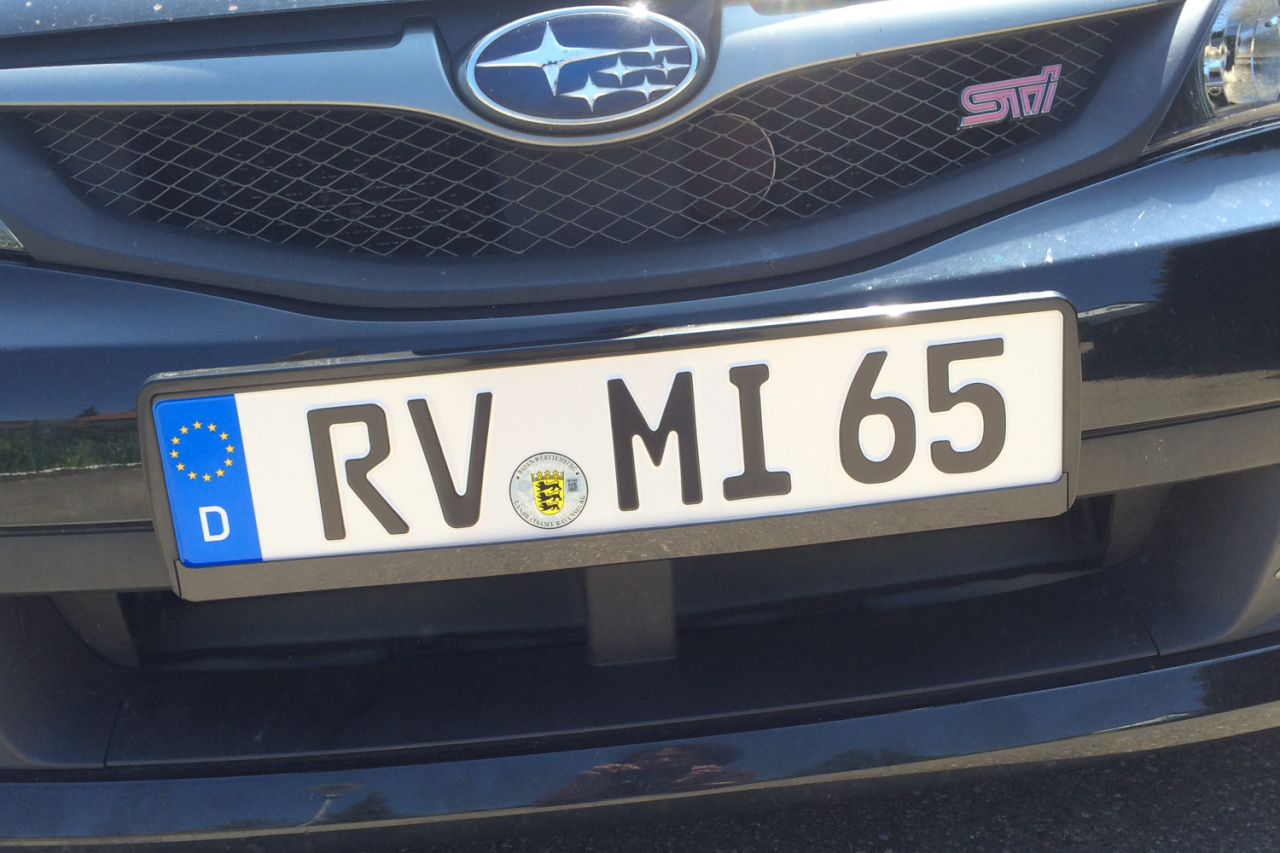[Update 2016-06-25: accidentally deleted this post, and lost some info posting it back. Oops.]
It took a while, but I finally got my approval from TÜV (Technischer Überwachungsverein) for my 2008 Subaru Impreza WRX STI. This is necessary to register my car in Germany. A car requires this approval every two years.
Other organizations, such as DEKRA, can also do these Hauptuntersuchung (HU), or vehicle inspections.
So how was I able to get my U.S. car through TÜV? The American Way—through hard work (translation: I kept paying to get stuff done) and perseverance (translation: I kept lying). As far as I can tell, I had three months to get this done after the car arrived in Germany.
I had prepared for this as much as I could while in the U.S. based on my previous experience, but I wasn’t able to cover everything.
Paper Work
What would a German inspection be without someone asking for my papers, please? In this case, it’s something called a Datenblatt (data sheet). If you have connections or contacts to an automobile manufacturer, you can try to get one from them.
Or TÜV can supply one for your car (if available), but it’s not cheap. Their Datenblatt for my Subaru cost 255€.
If you’re following along at home, the organization that says I need a Datenblatt can sell me one. That seems legit.
So what’s on this document? Basic vehicle information like car type, power, dimensions, etc. An important number is the CO2 level. It’s pretty much what you would find on the internet for your car. Except this has a 255€ TÜV stamp on it, so it’s mo’ better.
What wasn’t there is which Euro norm (1-6) my car meets, which would have saved me money on customs taxes.
I also needed to show the vehicle title for the car. They actually wanted a Fahrzeugschein (a car’s own German ID papers, please), and the title was the closest that comes to it from America.
Cost: 255€ (varies slightly with car type)
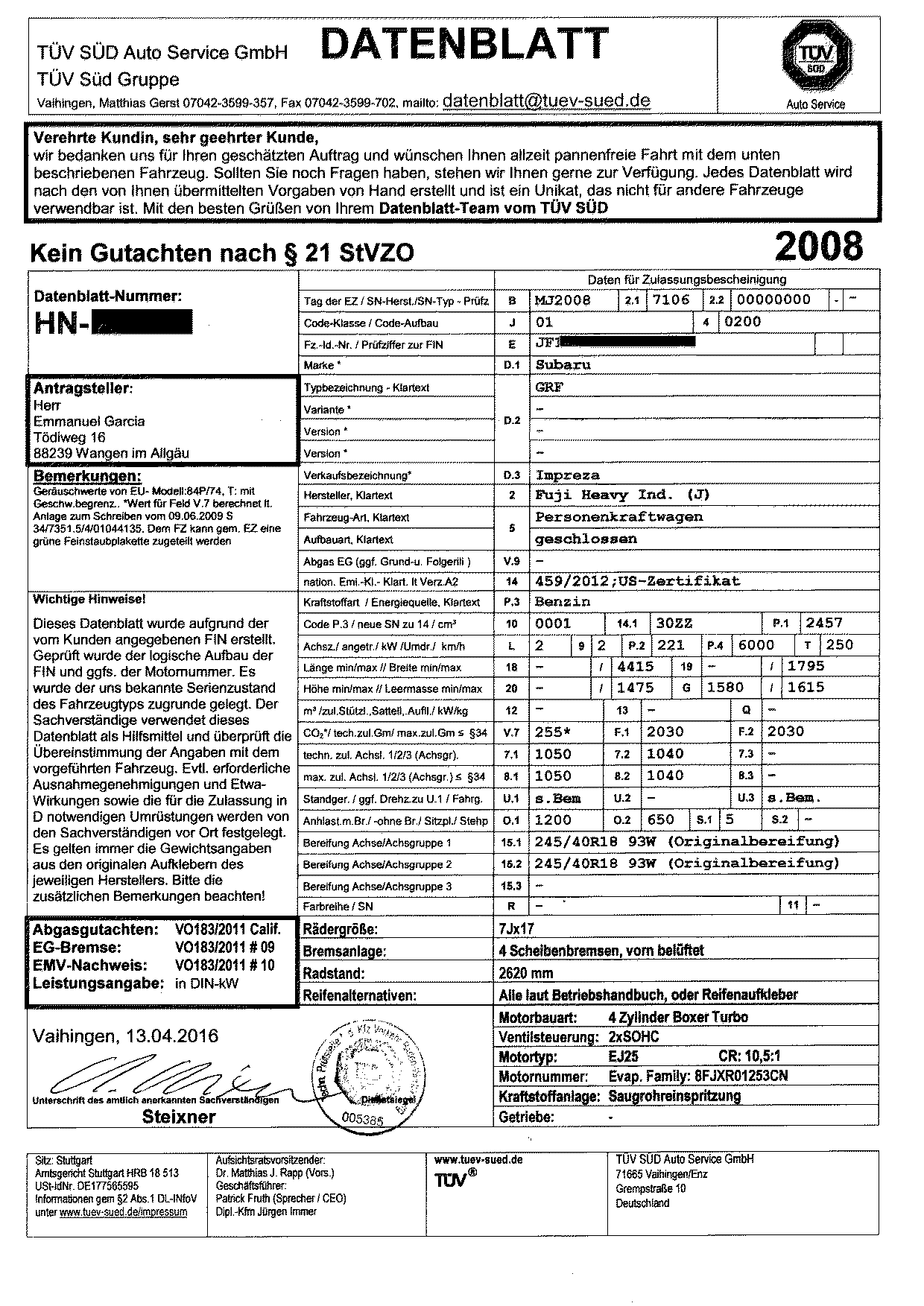
The tire size on this is wrong for my car (my rims are 18″ x 8.5″).
They must have done a bad internet search.
General Inspection
A general inspection is done to make sure things aren’t falling off the car, and that the stuff that’s on the car are supposed to be there. There was a brief rolling test and then the car was put on a lift and inspected from below for damage, wear, leaks, etc. The inspector also checked things like proper seat belts, correctly labeled windows, and working switches.
He looked for correct stickers, serial numbers, etc. He added the label in the picture below, which included the VIN and the weight of the car (front/rear). And yes, I already have a sticker that has exactly this same information on the same b-pillar. When I pointed this out, he said it didn’t matter. Maybe the numbers have to be in German.
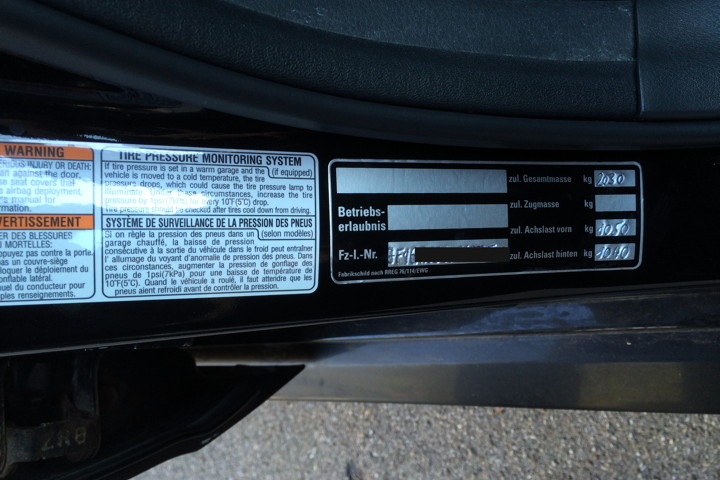
Whatever. As long as TÜV is happy.
This inspection was my first gotcha—the windshield. It had a few chips on it that have been there since the first months I’ve owned the car (thanks, I-96 in Novi, MI). The chips aren’t even as big as a typical Detroit bullet hole, but the windshield still had to be replaced.

Even Germans use a quarter for size comparison. (No, not really.)
The second item he noticed were my springs. I am running RCE yellows, which are not production. And they’re yellow. I didn’t get a chance to paint them black (or pink) before I moved, and the rubber/plastic cover on them have almost completely peeled off. I told him that those were Subaru Performance Tuning parts, and that the STI came with standard “race car” parts on the car, like Brembo brakes, bigger sway bars (note: also not production), etc.
He bought that answer.
I had waited to get my inspection until I had installed my OEM summer tires and wheels again, as I use smaller winter tires on non-TÜV approved wheels. The winter wheels would not have passed.
Things that he missed: downpipe (with 6 months of weathering), RCE sway bars, drop links, lower ride height, Killer B oil pan behind the plastic undertray.
Things he asked about: production tires, production brakes, safety vests, first aid kit
Cost: 300€ (windshield), 10€ (first aid kit)
Emissions Testing
I don’t really want to delve deeply into this topic, but let’s just say that I had many reasons to think that this could have been a problem for my 8-year-old car. Older cars could be missing air pumps, could have larger injectors, or may have been re-tuned to keep them running “smoothly.” Luckily, my car just had a tune up to keep it as close to production as possible. As far as you know.
TÜV checked to see if there are any stored faults in the car. It doesn’t matter if the fault is active or not, it will need to get cleared. I overheard this a couple of times with other customers there. I’m sure TÜV did an OBD readiness check, too.
The smog test was static. The engine was revved to specific rpms as the gasses were collected and measured. I’m not sure what levels they were tested to (Anlage VIII StVZO). All I know is that my car passed—no VW trickery needed. Let’s leave it at that.

Fingers crossed—getting ready for emissions testing
Bright Nights, City Lights
Meeting European/German requirements for lights was actually my biggest headache. There is a requirement for reflectors in the back, which my car met. This was done with a visual check. I did not have a rear fog light, however, Looking online before I moved, I thought I could recreate the German version of this. It involves taking the driver reverse/back up lamp (7440) and turning it into a back up/fog light lamp (7443) and putting a red film over the back up lens.
I ordered some of the parts in the U.S., but ran into the issue of not getting the light bulb socket that I needed. The Subaru dealer here simply ordered the necessary parts. I had already run wiring to the hatch for this modification, which they used.
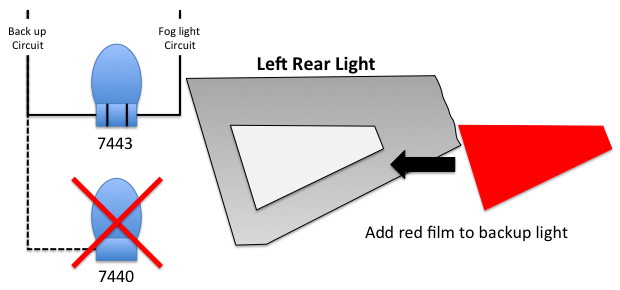
This was my plan, but I couldn’t find all the parts I needed.
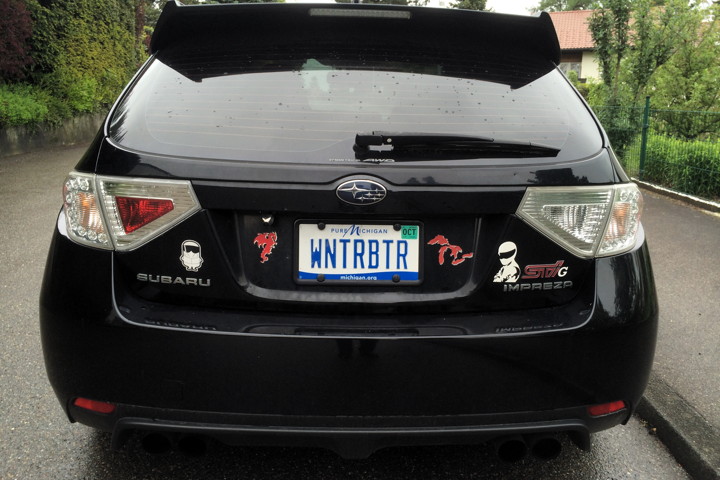
This is how it turned out with the actual left rear light housing.
When I back up, the red fog light will turn on as well, but not as bright.
The U.S. dealer-installed front fog lights also didn’t pass muster. TÜV didn’t think they were bright enough (9006 HB4 @ 55W). The dealer here said they would simply disconnect them because they are not mandated in Germany. And yes, I had just gotten these fixed while in the U.S. to pass this inspection.
(You may be asking yourself, what would happen if the dealer unplugged the fog lights, TÜV approved the change, and then the owner plugged the lights back in? Well, a typical German owner would never do such a thing.)
Next were the high beams. My car uses 9005 HB3 bulbs, which are apparently not common here (he said you can’t just pick one up at a gas station). I have to carry the replacement bulbs in the car, just in case.
Somehow, the inspector approved my low beams. He checked the brightness and the angle of the beams with his reflector device. He was happy that I could manually adjust the beams completely down and meet whatever requirement he had in mind.
But… according to what I’ve read, xenon lights have to be self-leveling in Germany. Mine are not. Also, the beam pattern is different, as there is a very sharp drop off in the beam pattern for on-coming traffic in Germany.
I was pretty happy that he passed these lights, and so avoided having to replace them. This lasted 10 minutes until he mentioned that the park lights (Standlicht) in the front were amber, and they were supposed to be white.
He wouldn’t accept using the daytime running lights as the white Stadtlicht because the amber ones still glow when the park lights are switched on.
After some research, I ordered LED lights that are white when used as park lights, and amber when used as blinkers. These Chinese-made LEDs seem just the ticket, but TÜV would not allow them when I brought the car back. These lights have no TÜV-approved documentation on their power dissipation, etc., so I could not use them.
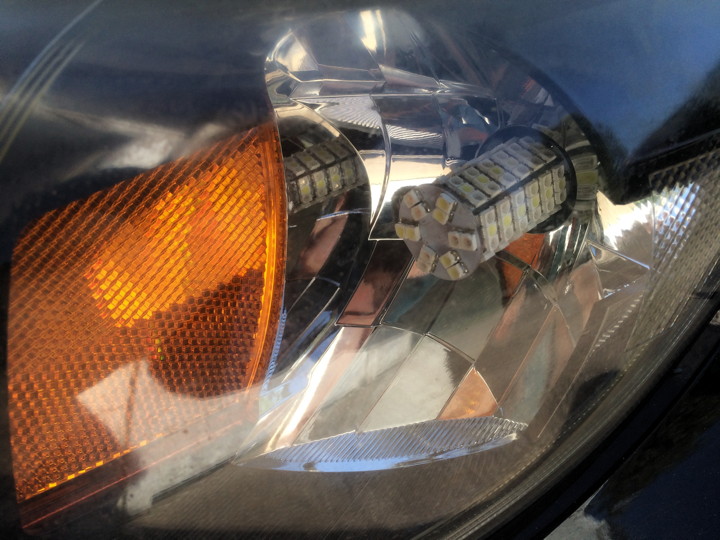
Burns white, blinks amber, annoys TÜV
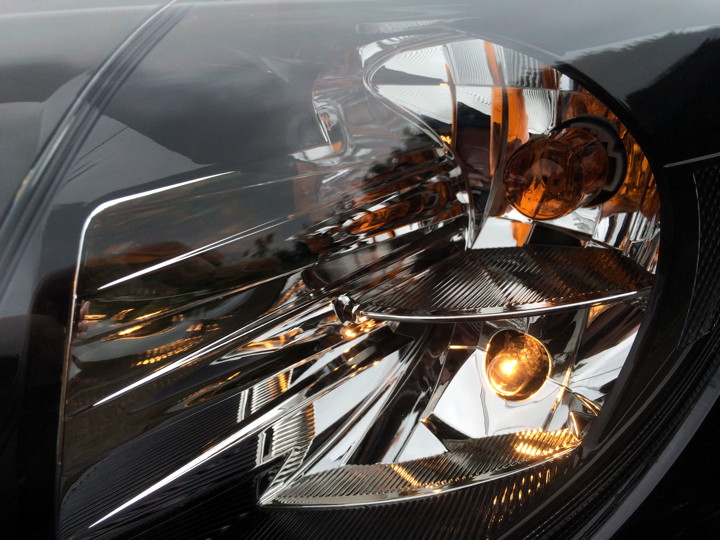
Nice, clean, regulation lights The expensive German version
In the end, I had to order new German xenon head lights with the park lights, which cost 720€ each, instead of a pair of LEDs for 10€ (and a new flasher). I think there was a small chance that had I installed these LED bulbs initially, I could have used social engineering to get them passed on my first inspection.
One thing that wasn’t checked was making sure my brakes lights were fused left and right. I had to get this modification the last time I went through this.
I’m sure there were many other things that he checked that my Japanese-built car may have accidentally had, but didn’t mention to me. In the end, it was all about the lights.
Cost: 1440€ (headlights), 67€ (rear fog light)
The Bill
Discounting the windshield, the total in parts and paperwork is 1772€. The TÜV inspection itself cost 228€. Labor and taxes for the changes was not trivial, but in theory I could have done the work myself if I had a garage big enough to fit me and the car inside at the same time. With everything included, it’s actually well over 3000€. And then there’s the shipping costs of the car from the U.S. ($1900), with more costs to come.
Also, please be amazed that bringing an American-spec car to Germany is even conceivable. The opposite—bringing a non-U.S. car to America—is next to impossible. There are exceptions for cars older than 25 years; for “Show and Display” cars, which is a very short list (xls); and for cars that are very similar to those sold in the U.S. (i.e., Canadian cars that are almost like the U.S. version). That’s it.
The real important points here are that Germany has a lot of rules, and that only an idiot would want to go through this.
EKZ, RTL und DFB
ABS, TÜV und BMW
KMH, ICE und Eschede
PVC, FCKW – is nich’ OK.
MfG—mit freundlichen Grüßen—Die Fantastischen Vier
Epilogue
I thought getting my vehicle registration would be smooth sailing after that. I went to the car registration office (Kfz Zulassungsstelle) and had the following conversation.
Official: Do you have your Unbedenklichkeitsbescheinigung or Verzollungsnachweis?
Me: My wuzzis?
That was the first question. It did get easier after that.
Official: Did you do that thing that all people in Germany do?
Me: No, we don’t do that in America.
Official: Do you have that thing that all German cars have?
Me: No, we don’t have that in America.
I guess I had to get even more stuff first.
(I want to say that all the officials that I dealt with here in the Allgäu region were very nice and helpful. Any frustration was because I didn’t know everything I needed beforehand.)
After spending a full day at both the Customs office (Zollamt) to officially import my car and the car registration office, and while paying even more taxes and fees, I finally got my license plates and Fahrzeugschein.
But I couldn’t quite drive home. They confiscated my Michigan plates when I got the German ones, and I couldn’t directly mount the square German plates on my American car.
The guy that makes the license plates was out of the license plate holders for my size. He was about to help me drill holes into the plate when we decided that the oversized plate holder would work until I could get one with the right size. This was much better than looking like an idiot in a parking lot with a car that I couldn’t drive.
After driving home, I decided that the square license plate looked goofy up front, so with the proper paperwork this time I went back to the registration office and bought a normal-shaped license plate.

Mind the Gap… between the sides of the license plate and the holder
You can personalize the letters (A-ZZ) and numbers (1-9999) after the Landkreis letters[1], if it fits on the license plate. I was going for Michigan roads I had lived by, like M-102 (8 Mile), M-24 (Telegraph Road), or business US-23 (Main Street), but they were all taken so I just went for something more random. Michigan roads must be popular in Germany.
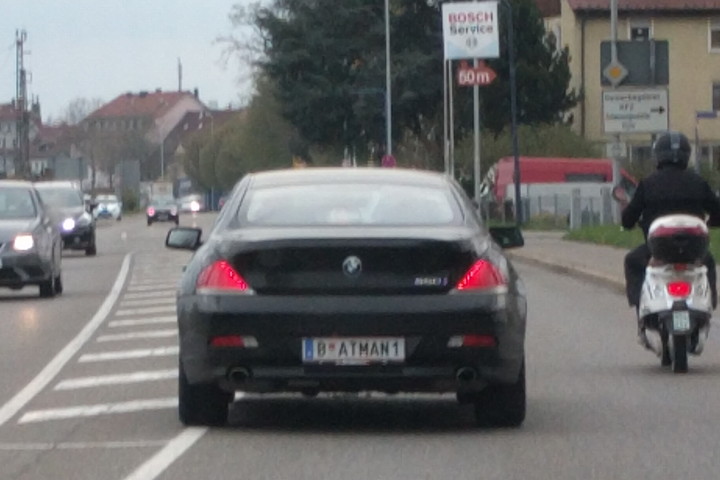
An Austrian BMW with a personalized plate from Bregenz in Lindau
(photo credit: not Steve)
Now all I have to do is call the Zulassungsstelle every six months to ask them not to throw away my Michigan vehicle title and license plates so I can bring my car back to the U.S.
Why did I do this again? ![]()
[1] An urban or rural Landkreis is equivalent to a county in most U.S. states. The first letters of a license plate indicate which Landkreis the car is registered in. Examples of big ones include Berlin (B), München (M), Stuttgart (S), and Regensburg (R). A smaller Landkreis gets more letters, so Ravensburg gets RV, for example. One exception is Hamburg, which has HH (Hansestadt Hamburg), although it is bigger than Hannover (H).↩
Crankiness Rating: ![]()
![]()
![]()
![]()
![]()
![]()
![]()
![]()
![]()
![]()
![]()
Inhale… open wallet… exhale… Also, German bereaucracy… also, I’m legal
